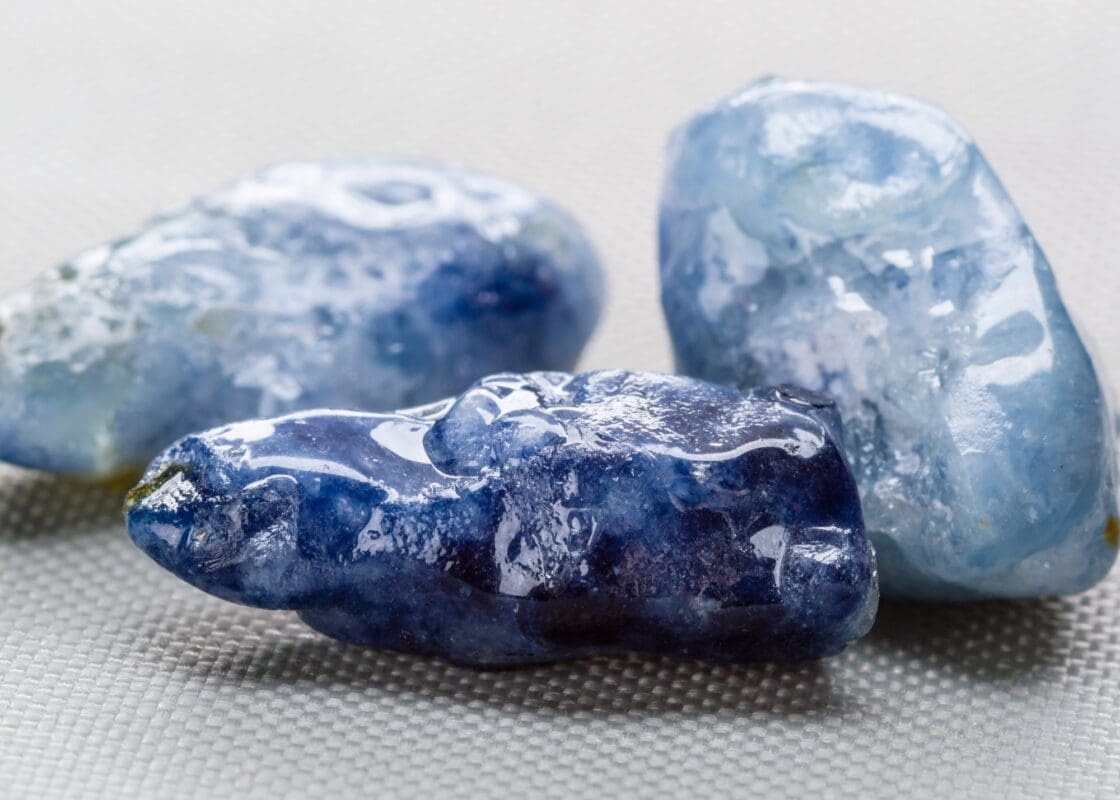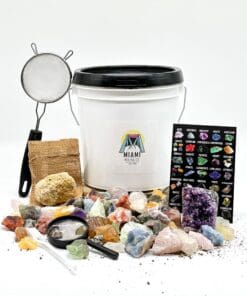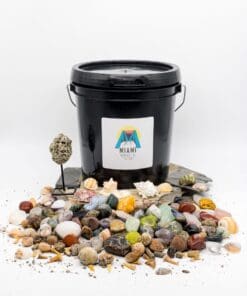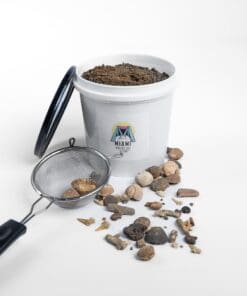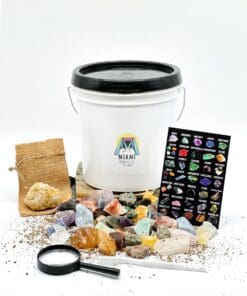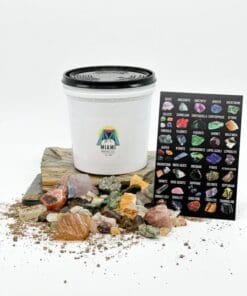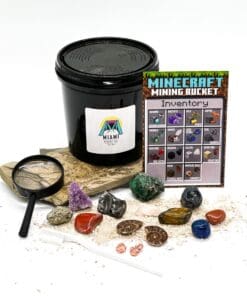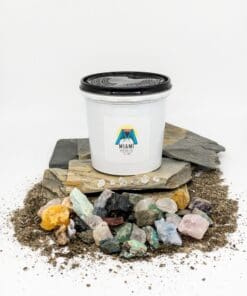Gem Mining West Virginia: Unveiling Appalachia’s Hidden Jewels
Gem mining in West Virginia offers both residents and visitors a chance to experience the thrill of discovering a hidden treasure beneath the state’s diverse landscape. The Mountain State, known for its rich history in coal mining, also boasts some enticing gem mining sites. This article aims to be a comprehensive guide to uncovering the most sought-after gems in West Virginia, their history, where to find them, and more.
The Most Popular Gemstones in West Virginia
West Virginia is a treasure trove for gem enthusiasts, offering a mix of both rare and common gemstones. The state’s varied geological formations provide the perfect environment for these stunning jewels to form. Below are tables listing the rare and common gemstones found in West Virginia, accompanied by a brief description of each.
Rare Gemstones in West Virginia

| Gemstone | Description |
|---|---|
| Blue Sapphire | This beautiful gemstone is cherished for its radiant blue hue and is a sought-after find in the state. |
| Red Garnet | A deep-red gemstone that’s often used in jewelry and as an abrasive. |
| Golden Beryl | A rare variation of beryl, this gem showcases a brilliant golden hue. |
| Smoky Quartz | A unique variation of quartz known for its smoky brown to black color. |
| Tourmaline | This crystalline boron silicate mineral varies in color and is cherished for its stunning appearance. |
Common Gemstones in West Virginia

| Gemstone | Description |
|---|---|
| Rose Quartz | A pale pink to rose-red gemstone often used in jewelry and decorative items. |
| Mica | A silicate mineral known for its shiny appearance and is commonly found in various rocks. |
| Agate | A microcrystalline variety of quartz, often featuring colorful bands. |
| Calcite | A carbonate mineral known for its wide color variety, from clear to yellow and blue. |
| Hematite | An iron oxide mineral cherished for its metallic sheen and reddish-brown streak. |
| Fluorite | Known for its stunning fluorescent properties and variety of colors. |
| Pyrite | Often called “Fool’s Gold,” this mineral has a metallic luster and pale brass-yellow hue. |
| Barite | This mineral appears as white, clear, or blueish and is often used in the production of barium chemicals. |
| Chalcopyrite | A copper iron sulfide mineral, it has a brassy to golden-yellow color. |
| Talc | The softest mineral, talc is often used in the production of talcum powder and has a greasy feel. |
These gemstones each tell a part of West Virginia’s geologic story, inviting both novice and experienced miners to experience the thrill of discovery firsthand.
Top Gem Mining Locations in West Virginia

- Huntington Gem Mine: Nestled in the heart of Huntington, this site is a favorite among both novice and experienced gem hunters. The mine is open daily from 9 am to 5 pm with an entrance fee of $10 for adults and $5 for children under 12. Children under 5 enter for free.
- Blue Ridge Mountains Gem Mine: Located within the picturesque Blue Ridge Mountains, this gem mining spot offers an experience like no other. Seasonal operating hours typically run from April to October, 8 am to 6 pm. The entry fee is $15, which includes a basic gem hunting kit.
- Kanawha Valley Mines: A prominent site in the Kanawha region, these mines are renowned for their abundance of quartz crystals. They operate year-round from 10 am to 4 pm, and there’s a $12 fee which provides you with a bucket of raw gem-bearing material.
- Monongahela Crystal Caves: Situated near Morgantown, this location offers an underground gem mining experience. Open on weekends from 9 am to 3 pm, there’s an admission fee of $8.
- Greenbrier River Gem Trenches: Located alongside the stunning Greenbrier River, this spot is excellent for gem sluicing. They operate from May to September, 9 am to 5 pm, with an entrance fee of $10, granting access to sluicing troughs and equipment.
- Potomac Highland Gem Pits: Located in the eastern part of the state, the Potomac pits offer a wide variety of gems. Operating hours are from 8 am to 6 pm during the summer months, and the fee is $20, which includes three buckets of gem-rich soil.
- Charleston Shimmer Mines: Located just outside Charleston, this mine is known for mica and quartz finds. They’re open from April to November, 9 am to 4 pm, with an entrance fee of $12 that includes a digging kit.
- Beckley Beryl Grounds: Found in the southern part of the state near Beckley, this mining location is famous for its golden beryl finds. It operates from June to August, 10 am to 5 pm, with a $15 admission fee that covers a starter kit.
- Parkersburg Agate Arena: Near Parkersburg, this is the place to hunt for agates. It’s open all year round from 10 am to 3 pm, and the entrance fee of $10 provides you with digging tools.
- Wheeling Wonder Mines: Situated close to Wheeling, this mine is best known for fluorite discoveries. Open from March to October, 9 am to 5 pm, the admission fee is $14, which includes a bucket of gem-rich soil to sift through.
Each of these sites offers its own unique experience and treasure trove of gems waiting to be unearthed. Whether you’re a seasoned gem hunter or just looking for a fun family outing, West Virginia’s gem mines promise an adventure filled with wonder and discovery.
History of Gem Mining in West Virginia

West Virginia, affectionately known as the Mountain State, has a rich tapestry of history interwoven with tales of gem mining. The pursuit of hidden treasures beneath its rugged terrain can be traced back centuries, even before the arrival of European settlers. The state’s early inhabitants, Native Americans from various tribes, first identified and utilized these precious stones not just as ornamental pieces but also as tools and trading items.
By the 1800s, as settlers streamed into the region and began to establish communities, there was an uptick in interest in West Virginia’s mineral wealth. The discovery of sapphires in the rivers and streams particularly generated significant buzz. Word spread about the state’s bountiful gem sources, and soon, individuals from neighboring states began flocking to West Virginia, eager to stake their claim and unearth the next big gem discovery.
The late 19th century saw the establishment of several organized mining operations. Unlike the coal mining industry, which rapidly industrialized and became the backbone of West Virginia’s economy, gem mining remained a largely individual or family-oriented activity. This gave the activity a distinct charm, as stories of families passing down secret mining spots from generation to generation became part of local lore.
However, the turn of the century also brought challenges. As coal mining grew exponentially, many gem mining sites faced threats from expanding coal operations. This led to tensions between the two industries, with coal often overshadowing the state’s gem potential in economic importance.
Yet, the spirit of gem mining in West Virginia persisted. In the mid-20th century, there was a revival in interest, driven by both tourism and a newfound appreciation for local gems in jewelry and craftwork. This resurgence has continued into the 21st century, with many of the state’s gem mining locations becoming popular tourist attractions.
Today, West Virginia’s gem mining heritage is a testament to the state’s diverse geological and cultural history. It stands as a bridge between ancient traditions and modern-day pursuits, inviting everyone to experience the thrill of discovery that has captivated generations.
Gem Mining Regulations in West Virginia

West Virginia’s vast mineral wealth has led to the establishment of regulations aimed at ensuring sustainable and responsible mining. Whether you are an experienced prospector or a family setting out for a day of fun, understanding these regulations is essential. They are crafted not only to protect the state’s rich geological resources but also to preserve the natural environment and maintain the safety of everyone involved.
- Permit Requirements: Before you set out with a shovel and sieve in hand, you should be aware of the necessary permits. In most cases, especially for recreational gem mining, a permit is required. These permits ensure that the state keeps track of who is mining and where, preventing potential over-mining in certain areas. They can be acquired from the West Virginia Department of Natural Resources and may vary in terms of cost and validity duration.
- Restricted Areas: Not every part of West Virginia is open for gem mining. Some areas are protected due to their ecological significance, historical importance, or because they are private property. The state has designated certain zones where mining is permissible. It’s essential to check with local authorities or consult state maps that highlight allowed mining zones to avoid inadvertently trespassing or causing environmental harm.
- Volume Restrictions: There are limits to how much one can extract. These restrictions prevent rapid depletion and encourage miners to only take what they need. The exact quantity may vary depending on the site and the gemstone, but the overarching principle is sustainability.
- Environmental Considerations: Miners must adhere to practices that minimize their environmental footprint. This includes refraining from using harmful chemicals, responsibly managing waste, and avoiding activities that might harm local flora and fauna. Given that some of West Virginia’s mining sites are in ecologically sensitive areas, such as riverbanks, these guidelines are crucial for maintaining the state’s natural beauty.
- Safety Regulations: Given the inherent risks associated with mining, there are regulations in place for safety. This includes rules about the use of heavy machinery, guidelines about mine shafts, and even recommendations on protective gear that should be worn. Adhering to these rules not only ensures the safety of the miner but also of those around them.
- Reporting and Inspection: On occasion, state inspectors might visit mining sites to ensure that all regulations are being followed. Miners are often required to keep logs of their activities and finds, which can be subject to review.
In conclusion, while West Virginia offers immense promise for those seeking gem treasures, it is paramount to approach this endeavor with respect for the state’s regulations. Being informed and responsible ensures that gem mining remains a cherished activity for generations to come, balancing the thrill of discovery with the importance of conservation and safety.
Necessary Tools and Equipment for Gem Mining in West Virginia
The prospect of unearthing a hidden gemstone in West Virginia is an alluring one, but it’s essential to come prepared. The state’s varied terrain, from riverside trenches to mountainous caves, demands specific tools to maximize your gem hunting potential. Here’s a comprehensive guide to the equipment you’ll need based on the nature of the mines and the gemstones you’re after:
1. Screening and Classifying Tools: Reveal those hidden treasures!
Description: Once you have extracted gem-bearing soil, you’ll need sieves and screens to separate the gems from the dirt. These tools come in various sizes, with the mesh’s tightness determining the size of the stones you’re likely to find.

🛒 Explore Top Screening Sets on Amazon
2. Shovels and Trowels: Digging deep or just scratching the surface?
Description: For more delicate work or when dealing with softer grounds, smaller tools like hand trowels or even small brushes can be beneficial.

🛒 Find Quality Shovels and Trowels on Amazon
3. Picks and Hammers: The backbone of any gem hunting endeavor.
Description: A robust shovel and a pickaxe are fundamental. They allow you to dig deep into the soil, break apart hard rocks, and reveal the gemstones hidden beneath the surface.

🛒 Check Out Best Picks and Hammers on Amazon
4. Buckets: Your trusted companion for carrying treasures.
Description: The basics of any mining endeavor, a sturdy bucket, and shovel are essential. A standard garden shovel will suffice, but there are specialized shovels with pointed tips that make breaking into the earth easier.

🛒 Shop for Reliable Buckets on Amazon
5. Magnifying Glass: Every detail counts!
Description: This small, portable magnifying glass is instrumental in inspecting your finds up close. It can help distinguish between an ordinary rock and a potential gemstone.

🛒 Grab Your Magnifying Glass on Amazon
6. Guidebooks and Field Guides: Knowledge at your fingertips.
Description: A gemstone identification book tailored to West Virginia’s geology can be invaluable. It offers insights into the types of gemstones you might encounter and provides tips on where to look.

🛒 Discover the Best Field Guides on Amazon
7. Containers and Bags: Organize, store, and flaunt your finds.
Description: Small pouches or containers are essential to store and protect the gemstones you find. Soft cloth bags or padded boxes are ideal as they prevent your treasures from getting scratched.

🛒 Shop for Storage Solutions on Amazon
8. First Aid Kit: Better safe than sorry!
Description: Given the nature of mining, minor injuries like cuts or scrapes are possible. A first-aid kit equipped with the basics (band-aids, antiseptic wipes, and tweezers) is crucial.

🛒 Secure Your First Aid Kit on Amazon
Preparation is key to a successful gem mining expedition in West Virginia. Equipped with the right tools and knowledge, your adventure becomes not just rewarding but also safe and enjoyable.
Tips and Tricks for Successful Gem Mining in West Virginia

Gem mining in West Virginia is as much an art as it is a science. To transform an expedition from mere rock collecting to an adventure of genuine discovery, here are some seasoned tips and tricks:
- Time It Right: Early spring and fall are the most optimal seasons for gem hunting in West Virginia. These periods offer moderate temperatures and avoid the heavy rainfall of summer, which can make certain mining locations challenging to navigate.
- Start Early: A morning start has multiple benefits. Not only do you beat the midday sun, but the early morning light often provides the best visibility for spotting gems on the ground.
- Research Ahead: Know what gemstones are native to the area you’re visiting. Understanding the color, luster, and typical size of these gems can give you an edge in identifying them amidst the rubble.
- Follow the Water: Many gemstones are washed down by rivers and streams. Exploring riverbeds, especially after a rain, can often yield impressive results. But always be cautious of water currents and slippery rocks.
- Talk to Locals: Engage with local miners or gem enthusiasts. They might offer insights into lesser-known spots or share recent discoveries that could guide your search.
- Practice Patience: Gem hunting is often a game of patience. Don’t be discouraged if you don’t find something immediately. Remember, it’s the thrill of the hunt as much as the find itself.
- Layering is Key: When dressing for the day, wear layers. Temperatures can fluctuate, and being able to adjust to the weather will keep you comfortable.
- Stay Updated on Regulations: Before you head out, check for any new regulations or restrictions in the area. Some sites might have seasonal closures or specific guidelines that change over time.
- Join a Group: Especially if you’re new to gem hunting, joining a group or participating in a guided tour can offer a wealth of knowledge and increase the chances of a successful find.
- Mind Your Footprints: Always adhere to the Leave No Trace principles. Fill up any holes you dig, don’t leave trash behind, and respect the environment. The beauty of West Virginia’s outdoors is a treasure in itself.
In conclusion, while the pursuit of gemstones can be exhilarating, success often comes to those who combine preparation with respect for the environment and an enduring passion for discovery. Embrace the journey as much as the destination, and you’ll find that West Virginia’s gem mining experience is truly unparalleled.
Handling Your Gemstone Finds

After a successful day of gem hunting in West Virginia, you’ll want to ensure your newfound treasures are properly cared for and showcased. Here’s a step-by-step guide to help you handle, preserve, and even display your gemstones:
- Cleaning Your Gems: Begin by cleaning your gemstones to remove dirt and debris. Using lukewarm water and a soft brush, gently scrub the gems. For softer stones, simply rinsing them under running water can suffice. Avoid using harsh chemicals or abrasive materials.
- Categorization and Storage: Once cleaned, categorize your gemstones by type, size, or color. Store them in individual soft cloth pouches or in compartmentalized boxes to prevent scratches.
- Document Your Finds: Create a logbook of your finds. Note down the date, location, and any unique characteristics of the gem. This not only helps keep track of your collection but also adds a personal touch to your gem hunting story.
- Seek Expert Identification: If you’re unsure about the identity of a particular stone, consider reaching out to a gemologist or visiting a local gem club. They can provide expert insights and might even help determine the potential value of your find.
- Display Options: Showcase your treasures! Acrylic display boxes, shadow boxes, or even simple glass jars can be effective. Consider placing a small label alongside each gem detailing its name and the location of its discovery.
- Learn Basic Lapidary Skills: For those truly passionate, learning lapidary – the art of cutting, shaping, and polishing stones – can transform your raw finds into beautiful jewelry pieces or ornamental displays.
- Preservation: Some gems can fade or deteriorate if exposed to direct sunlight or high humidity for extended periods. Research the specific needs of your gemstones and ensure they’re stored in conditions that will preserve their beauty.
- Consider Insurance: If you happen upon a particularly valuable gemstone, it might be worth getting it appraised and insured. While the sentimental value is irreplaceable, insurance can provide peace of mind.
- Share Your Experience: Join online forums, local clubs, or social media groups related to gem hunting. Sharing your experiences, tips, and finds can be gratifying and foster a sense of community.
- Continue Educating Yourself: The world of gemstones is vast and intricate. Consider investing in books or online courses to deepen your understanding and appreciation of your finds.
In essence, the care and admiration you show towards your gemstone finds are a testament to the adventure and effort behind each discovery. Treat each stone as a chapter in your gem hunting journey in West Virginia, and you’ll find the experience enriched manifold.
Famous Gemstone Finds in West Virginia
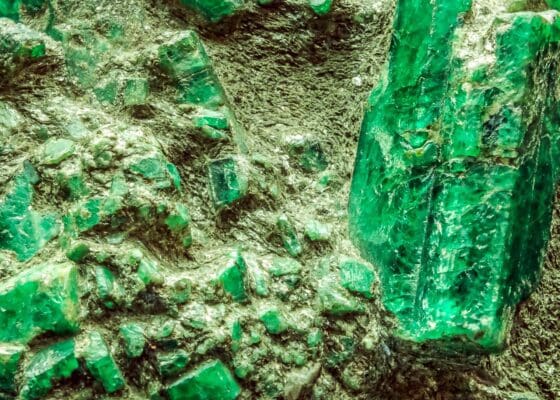
The rich geological tapestry of West Virginia has yielded many memorable gemstone finds over the years. Each discovery tells a tale of perseverance, surprise, and often, a hint of serendipity. Here are some of the most renowned gemstone discoveries that have etched their names into the annals of West Virginia’s mining history:
- The Greenbrier Emerald: Found in the mid-20th century, the Greenbrier Emerald is one of the largest emeralds ever unearthed in the state. Its deep green hue and pristine clarity have made it an iconic representation of West Virginia’s gemstone wealth.
- Mason’s Amethyst: Named after the amateur geologist who stumbled upon it, this amethyst crystal cluster was so sizable and vibrant in color that it quickly gained local, and then national, attention. It remains a testament to the unexpected treasures that casual exploration can bring.
- The Appalachian Pearl: Found in the rivers weaving through West Virginia’s mountains, this freshwater pearl’s almost perfect round shape and lustrous sheen make it a rare find. It’s a reminder that not all gem treasures are buried deep within the earth.
- Coal Valley Diamond: While not a genuine diamond, this quartz crystal’s diamond-like appearance and substantial size have made it a legend among local miners. Its discovery sparked a brief rush of enthusiasts hoping to find similar “diamonds” in the region.
- The Elkins Topaz: This brilliant blue gemstone, discovered near the town of Elkins, stands out for its size and clarity. It’s a shining example of the diversity of gemstones that West Virginia has to offer.
- Historic Garnet Deposits: While individual garnets of note have been discovered throughout West Virginia’s history, it’s the sheer volume of high-quality garnets found in certain deposits that have earned their fame. Some of these have been used in jewelry, while others serve industrial purposes due to their hardness.
- The Mercer Moonstone: This opalescent gemstone, with its ethereal glow reminiscent of moonlight, was discovered in Mercer County. Its beauty has made it a centerpiece in several jewelry designs.
- Cave Crystal Clusters: Over the years, explorers of West Virginia’s caves have occasionally stumbled upon geodes containing crystals. These discoveries, while not always of high monetary value, are cherished for their natural beauty and the thrill of their unexpected discovery.
- Flint Ridge Opals: Opals, with their play-of-color, are a delight for any gem enthusiast. Some of the most impressive specimens in West Virginia come from the Flint Ridge area, adding to the location’s gemstone legacy.
- The Kanawha Malachite: This vibrant green gemstone, usually found in association with copper deposits, was unearthed in the Kanawha Valley and is particularly notable for its intricate banding patterns.
These famed discoveries are more than just individual stones; they’re woven into the fabric of West Virginia’s cultural and geological legacy. They inspire the next generation of gem hunters with dreams of making the next big find.
Additional Gem Mining Opportunities
Venturing beyond West Virginia’s borders, you’ll find an array of gem mining opportunities awaiting in neighboring states. Each state brings its unique geological profile, offering a diverse range of gemstones and mining experiences:
- Kentucky Gem Mining: Delve deep into the Appalachian region of Kentucky and discover a treasure trove of agates, fluorite, and quartz. The state’s diverse geology promises a rich mining experience.
- Ohio Gem Mining: Renowned for its trilobite fossils, Ohio also boasts deposits of flint, particularly in Flint Ridge, which has been historically significant for Native American artifacts.
- Virginia Gem Mining: Virginia’s Piedmont region is a hotspot for amethyst, garnet, and tourmaline. The state also offers numerous mining sites with a rich history of gold prospecting.
- Maryland Gem Mining: From the Patuxent River area’s agates to the western region’s garnets, Maryland’s varied terrain offers an array of gems for those willing to explore.
- Pennsylvania Gem Mining: Known for its anthracite coal, Pennsylvania also offers opportunities for quartz crystals and garnets, especially in the eastern and southern parts of the state.
These neighboring states, each with its gemstone allure, provide enthusiasts with a wider canvas to explore, ensuring the adventure never truly ends. Whether you’re a novice or an experienced gem hunter, the Mid-Atlantic region promises a wealth of opportunities just waiting to be unearthed.
Ready to explore gem mining? Our Gem Mining Near Me guide is your perfect companion!
The Enduring Charm of West Virginia Gems and At-Home Discoveries
The allure of gem hunting in West Virginia is a timeless fascination, intertwining the thrill of discovery with a deep connection to the state’s rich geology. Every expedition into the hills and rivers of West Virginia promises not just a tangible reward in the form of beautiful gemstones, but also memories of adventures and the tales of each find.
However, for those who might be constrained by time, distance, or other factors, there’s still a way to experience the excitement of gem discovery. Introducing the “Home Gem Mining Kit” – a curated collection of rough gemstones waiting to be unearthed from the comfort of your home. Each kit offers a diverse range of gemstones, allowing you to sift, wash, and reveal hidden treasures, mimicking the authentic mining experience. It’s an engaging alternative that brings a piece of the great outdoors inside, ensuring the gem hunting adventure is accessible to all, anytime, anywhere.

